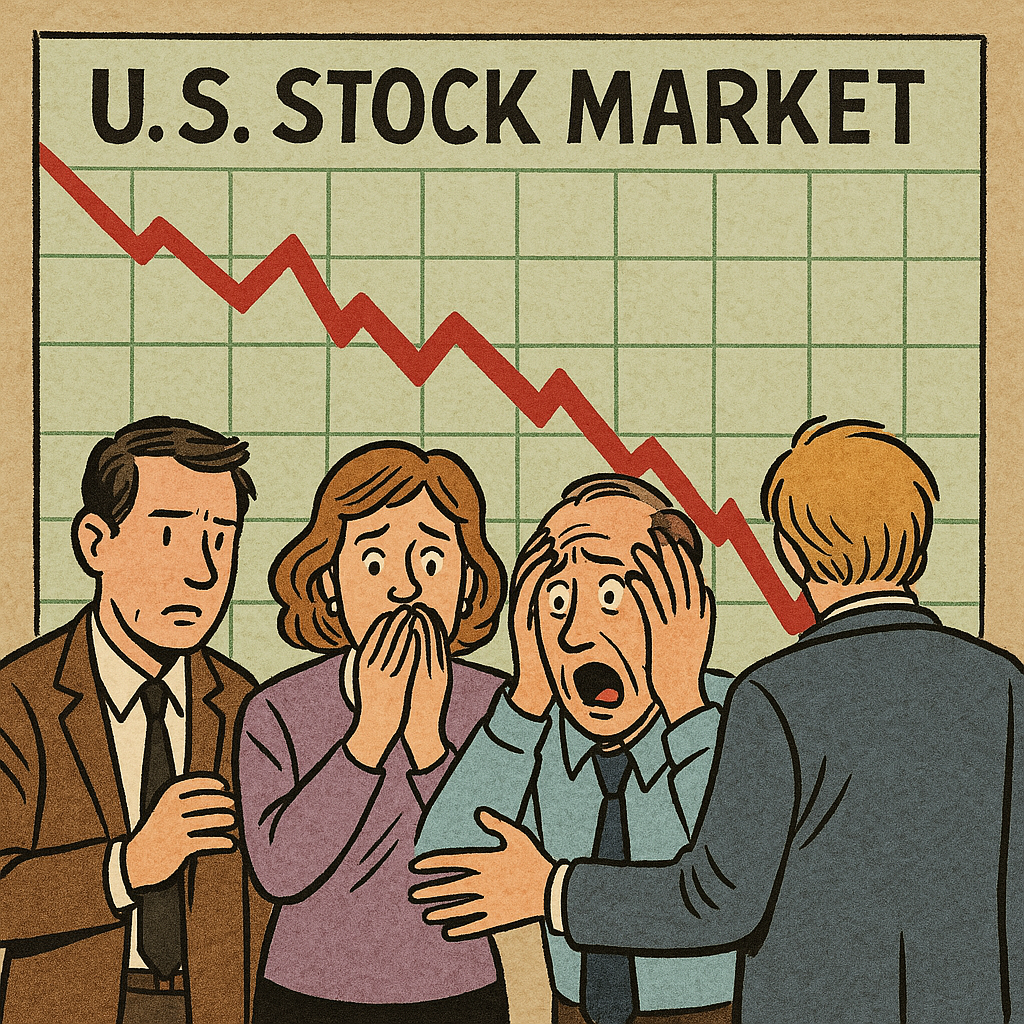📈 Introduction: U.S. Stock Market and 2025 Tariffs

In the wake of sweeping tariff reforms, the U.S. stock market has not only seen sector-specific turbulence but also suffered historic capital losses. In early Q1 2025, trillions in market value were wiped out globally, according to reports from Bloomberg and The Wall Street Journal, with American exchanges bearing a significant portion of the losses., with American exchanges accounting for a significant share. These drastic changes have sent shockwaves across investor communities and raised urgent questions about long-term stability.
In 2025, the U.S. stock market has undergone sharp shifts in response to changing tariff policies. With global tensions and U.S. government actions, investors are watching closely. This article unpacks how tariffs have affected different sectors and what global trade reactions mean for future investing.
🚩 The Impact of 2025 Tariffs on the U.S. Stock Market
Tariffs imposed on imports—especially from China, Canada, and Mexico—have rippled across Wall Street. While some industries rebounded quickly, others have seen their profits decline and investor confidence shaken.
📊 Stocks That Withstood the Tariff Storm
Tech giants like Apple and Microsoft, with strong digital service models and less import dependency, saw relatively stable performance. Their global presence and software-driven revenue models gave them a buffer.
🔻 Stocks That Struggled Under Pressure
Auto and manufacturing companies such as Ford and General Motors, heavily dependent on imported parts, suffered stock declines due to rising costs and disrupted supply chains.
🌲 Industries That Benefited
Some domestic-focused sectors thrived. For instance, U.S. lumber producers like West Fraser Timber gained ground due to rising prices on foreign timber imports.
🌍 Global Responses to U.S. 2025 Tariff Policy
Tariff policies have sparked international reaction, reshaping global trade dynamics:
- Canada: Pressured by lumber tariffs, Canadian firms faced uncertainty. Policymakers aim to expand non-U.S. trade routes.
- Mexico: With auto exports hit hard, Mexico is turning to trade with the EU and Asia to reduce U.S. dependency.
- China: Adapting quickly, China imposed counter-tariffs, promoted domestic consumption, and sought new trade partners to offset U.S. market loss. According to a BBC report, Beijing has focused on regional agreements and strategic self-reliance to reduce dependency on American markets.
💡 Investor Takeaways: Where to Look in 2025
Investors navigating tariffs and the U.S. stock market in 2025 should look for stability and long-term value:
- Dividend Stocks: Firms like Coca-Cola and J&J offer predictable returns during volatility.
- Blue-Chip Leaders: Companies like Berkshire Hathaway and Microsoft offer strong fundamentals.
- Commodity Investments: With higher import tariffs, sectors like steel and lumber (e.g., Nucor, West Fraser) show upward potential.
🧭 What Should Investors Do Next?
After witnessing a quadrillion-dollar blow to global equities, it’s natural to wonder: what now? Should investors hold onto cash, diversify internationally, or double down on undervalued U.S. blue-chips?
📌 Option 1: Hold Cash and Wait Some investors are taking a defensive stance—waiting for volatility to settle. This approach reduces short-term risk but may miss recovery opportunities.
📌 Option 2: Explore Overseas Markets With U.S.-centric tariffs pressuring domestic sectors, international markets—especially in Europe and Asia—may offer diversification and growth.
📌 Option 3: Buy the Dip in Strong U.S. Stocks If you believe in the resilience of American enterprise, now may be the time to accumulate quality names at a discount. Blue-chip companies with solid balance sheets could rebound strongly.
Ultimately, a balanced portfolio that includes cash, global exposure, and fundamentally strong U.S. assets may best navigate the 2025 market landscape.
👉 Related: Are Tariffs Really Good For Americans? Who Actually Pays The Price?
🔍 Conclusion: Strategy in a Shifting Economy
In a post-tariff U.S. stock market, flexibility and awareness are vital. When entire industries lose trillions in value, the ripple effect doesn’t just touch portfolios—it can reshape retirement plans, business investments, and even national economic policy. Tariff disruptions create winners and losers. Smart investing focuses on solid fundamentals, domestic strength, and global adaptability.
📘 Glossary
- Tariff – A tax placed on imported goods, often used to regulate trade or protect domestic industries.
Example: The U.S. imposed 35% tariffs on South Korea in 2025. - Blue-Chip Stocks – Shares of well-established companies with a history of reliable performance.
Example: Microsoft and Berkshire Hathaway are considered blue-chips. - Diversification – A risk management strategy that mixes different types of investments.
Example: Investing in both U.S. and international markets. - Commodity Investments – Assets such as oil, steel, or lumber that are traded based on physical goods.
Example: Nucor is a U.S. steel producer benefiting from tariffs. - Counter-Tariff – A retaliatory tariff imposed by one country in response to tariffs from another.
Example: China imposed counter-tariffs on U.S. agricultural goods.
